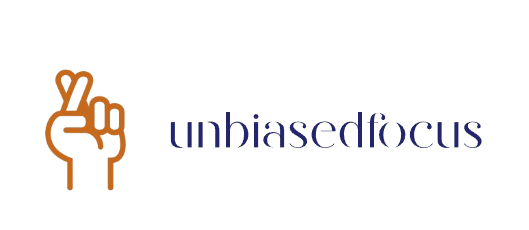In a world buzzing with distractions, productivity often feels like a mythical creature—elusive and hard to pin down. Yet, at its core, productivity is simply the quantity of output produced relative to the input used. Think of it as the magical formula that turns coffee into completed tasks, transforming those late-night brainstorming sessions into tangible results.
Understanding Productivity
Productivity represents the relationship between output produced and input used. By examining this concept closely, one can uncover its evolution and current relevance.
Historical Perspective
In ancient times, productivity centered around agricultural output. Societies measured success by the number of crops harvested from land cultivated. The Industrial Revolution marked a significant shift, focusing on mechanization and labor efficiency. Factories increased production rates dramatically, and the concept of time management emerged to optimize workers’ productivity. As economies progressed, the notion evolved from simple physical outputs to complex measures of efficiency within various professions.
Modern Interpretations
Today’s definition of productivity encompasses multiple dimensions. It extends beyond mere output to include qualitative factors, such as creativity and innovation. Technology enhances productivity through automation, enabling individuals to focus on higher-value tasks. Flexible work environments play a crucial role in modern interpretations, allowing for work-life balance and tailored workflows. Moreover, productivity now integrates mental well-being, recognizing that a healthy mindset boosts performance significantly. This holistic approach redefines productivity metrics, aligning them with contemporary work dynamics and individual goals.
Factors Influencing Productivity

Productivity hinges on several fundamental factors that shape output and efficiency. Understanding these influences helps individuals maximize their potential.
Work Environment
A conducive work environment fosters higher productivity levels. Adequate lighting, ergonomic furniture, and minimal distractions enhance focus. Open spaces encourage collaboration, while quiet areas allow for deep concentration. Comfortable temperatures also play a vital role in maintaining comfort and motivation. Employees report increased productivity in settings that prioritize flexibility and creativity. Cultivating a positive culture further supports teamwork and morale.
Technology Integration
Effective technology integration streamlines workflows and boosts productivity. Automation tools reduce repetitive tasks, freeing up time for strategic thinking. Real-time communication platforms enhance collaboration among team members. Project management software ensures clarity in roles and deadlines, promoting accountability. Additionally, data analytics offer insights that help optimize processes. As technology continues to evolve, leveraging the latest tools becomes critical for maximizing output and staying competitive.
Measuring Productivity
Measuring productivity employs both quantitative and qualitative metrics. These metrics provide insight into overall efficiency and effectiveness.
Quantitative Metrics
Quantitative metrics focus on numbers and data. Examples include output per hour, units produced, and sales figures. These measures allow businesses to assess performance against established benchmarks. Collecting data on task completion rates and time spent on specific activities further enhances analysis. Tracking these statistics consistently shows trends over time, revealing areas needing improvement. Organizations can set realistic goals based on historical performance, allowing for better resource allocation. By utilizing software tools, teams streamline their evaluation processes, ensuring timely insights into productivity levels.
Qualitative Metrics
Qualitative metrics assess the quality of work produced. They incorporate factors like creativity, employee engagement, and customer satisfaction. Feedback from team members often highlights a workplace’s innovative culture or morale. Surveys and interviews provide direct insights into employee perspectives, indicating how connected they feel to their work. Evaluating project outcomes on criteria, such as the originality and effectiveness of solutions, offers a more comprehensive view of productivity. Consistently analyzing these elements fosters an environment that values not just output but the overall contribution to organizational goals.
Challenges in Defining Productivity
Defining productivity poses numerous challenges due to its complex nature and varying interpretations.
Subjectivity in Measurements
Subjectivity arises when measuring productivity, as perceptions differ widely among individuals and industries. Quantitative metrics like output per hour often miss qualitative aspects, such as creativity and engagement. Workers in creative fields might favor qualitative assessments, emphasizing the uniqueness of their contributions rather than just the volume produced. Contrarily, manufacturing environments may prioritize numerical data, viewing it as a clearer indicator of success. This reliance on differing evaluation criteria complicates a universal definition of productivity. The disparity in perspectives often leads to inconsistent benchmarks, making it challenging for organizations to establish cohesive productivity goals.
Impact of External Variables
External variables significantly impact productivity, affecting performance in unpredictable ways. Economic conditions, such as market fluctuations or recessions, can hinder productivity levels across sectors. Environmental factors, including workplace distractions and commuting times, disrupt focus and efficiency. Social influences, like company culture and teamwork dynamics, further shape individual and collective output. These external factors combine to create a complex web that organizations must navigate to optimize productivity. By acknowledging these variables, companies can develop strategies that mitigate their negative impacts and promote more consistent productivity results.
Conclusion
Understanding productivity as a blend of quantitative output and qualitative input is essential in today’s dynamic work environment. By recognizing the diverse factors that influence productivity individuals and organizations can tailor their approaches to maximize effectiveness. Embracing technology and fostering supportive workspaces can lead to enhanced focus and creativity.
As productivity continues to evolve it’s crucial to adapt measurement strategies that reflect both the numbers and the quality of work. This holistic perspective not only drives performance but also nurtures innovation and engagement among teams. Ultimately a balanced view of productivity empowers individuals to achieve their goals while contributing meaningfully to their organizations.

